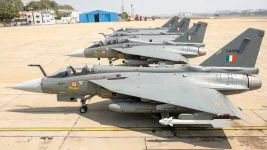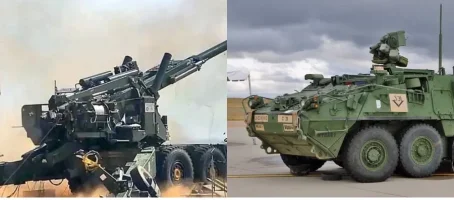- Views: 4K
- Replies: 16
In a groundbreaking development, India's Defence Research and Development Organisation (DRDO) has revealed that the indigenous Light Combat Aircraft (LCA) Tejas boasts one of the smallest Radar Cross-Sections (RCS) in its class.
This remarkable achievement is attributed to the extensive use of composite materials in the aircraft's construction, highlighting India's leadership in composite technology for defence applications.
While not originally intended as a stealth fighter, the Tejas's design has inadvertently granted it impressive stealth capabilities, surpassing similar fighter jets worldwide.
The DRDO reports that a significant 45% of the LCA-Tejas's airframe weight is composed of composite materials. This is substantially higher than the composite usage in many other contemporary fighters.
Moreover, an astounding 90% of the aircraft's external surface is made up of composites. This strategic implementation of composites not only provides structural advantages but also significantly reduces the aircraft's radar signature.
Unlike many of its counterparts that rely heavily on metallic structures, the Tejas's composite airframe excels in minimizing electromagnetic reflection—a crucial factor in modern aerial warfare. This design element enhances the aircraft's survivability in challenging combat environments where evading radar detection is paramount.
Composites possess inherently lower radar reflectivity compared to metals. By incorporating such a high percentage of composites in the Tejas's design, the DRDO has ensured that the aircraft has a naturally low RCS, making it harder to detect by enemy radar systems. This stealth advantage is a game-changer in modern air combat, where the element of surprise can be decisive.
Although stealth was not a primary design objective for the Tejas, the extensive use of composites has inadvertently contributed to its stealth characteristics. As a result, the Tejas exhibits a greater degree of stealth than other aircraft in its category, providing a tactical edge in operational scenarios.
Beyond its stealth benefits, the composite construction contributes to the Tejas's lightweight design, resulting in improved fuel efficiency, extended range, and enhanced maneuverability. Composites also offer excellent corrosion resistance, reducing maintenance demands and extending the aircraft's service life.
The DRDO has been a pioneer in the adoption and development of composite technology in India. The organization's emphasis on composites for defence applications has not only benefited the Tejas program but has also paved the way for future indigenous defence projects.
Through dedicated research and development, the DRDO has achieved mastery in composite manufacturing, ensuring that these materials meet the stringent requirements of military aviation, including strength, durability, and stealth performance.
This accomplishment underscores India's growing capabilities in aerospace technology and its commitment to self-reliance in defence manufacturing. The Tejas LCA stands as a testament to the DRDO's innovative use of composite materials, demonstrating their potential to enhance stealth capabilities and revolutionize modern fighter aircraft design.


